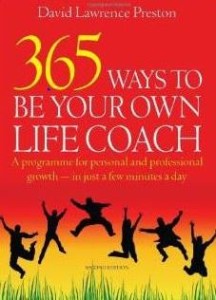Without memory, we would greet every new experience and every new piece of information in the same way as a new born baby.
Memory is the mental function which enables us to retain information, images and ideas when the original stimuli are no longer present. No memory is ever permanently erased (unless you suffer brain damage).
A powerful memory is a major asset – and it’s something everyone can develop. Consider: how different would your life be if you could easily recall conversations, names, dates, times, places, facts and figures – in detail?
Three levels
Your memory has three distinct levels:
Sensory memory
Sensory memory records information received directly through the sense organs, (eyes, ears, nose, taste and touch sensors). It stores it for a fraction of a second, then it rapidly fades unless sufficient attention is paid to it to transfer it to short term memory for further processing.
Sensory memory can hold only as much material as can be absorbed by the senses at any one time.
Try this: Look at any small object then close your eyes. What do you see? You will usually see an ‘after image’ in your mind’s eye that soon fades. This is your sensory memory working.
Short Term Memory
This is the part of your memory used for storing small amounts of information on a temporary basis. It enables you to perform calculations and remember things like names and telephone numbers. It works by combining new information with knowledge stored in long term memory.
The short term memory has a very limited capacity, and retains information for no more than a few minutes. Most people can remember six to eight items for a minute or two, which is why postcodes, car number plates and telephone numbers normally have only six to eight digits.
Chunking
Material in the short term memory is coded by the brain so that it can be organised into a more easily handled format. One method is ‘chunking’ – organising information into ‘chunks’ that have a more familiar form to the user. Some information lends itself to chunking more easily than others. For example, instead of attempting to remember a telephone number such as 0107095445 3317, ‘chunk’ it into 010-7095-445-3317. Rhythmic repetition of the chunks makes recall easier.
Try this: Use ‘chunking’ to memorise the spelling of the following well known Welsh railway station:
Llanfairpwllgwyngyllgogery-chwyandrobwyll-llantysiliogogogoch
(The locals refer to it as Llanfair PG!)
Long Term Memory
Have you ever tried to recall something which is ‘on the tip of your tongue’, then some time later, when you’ve moved on to something else, it suddenly comes to you? This is your long-term memory in action.
Long term memory is a permanent storehouse of information. Everything you have ever experienced through your five senses or imagined is stored away in the vast memory banks of your unconscious. No memory can be erased; it is simply a matter of knowing how to bring it back into consciousness when you need it.
In the 1950’s, Dr Wilder Penfield astounded the scientific world with a series of experiments which involved touching the temporal cortex of the brain with a probe carrying a weak electric current. Patients who were fully conscious under local anaesthetic were suddenly able to recall childhood incidents in great detail.
One middle-aged woman relived her fifth birthday party – she felt as if she was actually opening her presents (describing each one in detail), and blowing out the candles on her birthday cake. She named all the guests, even though she ‘saw’ them as little girls, most of whom she hadn’t seen for many years.
Although no memory is ever lost, material stored in the long term memory may not be strictly accurate. It has undergone a large amount of processing, having been filtered through your attitudes, beliefs and perceptions. Hence you remember what you perceived and believe happened rather than what actually did.
Memory is also affected by any strong emotion you were experiencing at the time of the original learning or incident, and also depends on the context in which the information was received. Remembering the circumstances in which an event was experienced often brings it back more easily.
Material is ‘forgotten’ by long term memory when new learning interferes with what is already stored. This can also happen in reverse: material already stored in long term memory can also interfere with remembering new material.
You never lose what is in the long term memory, but you may not remember the key which enables you to access it. It’s a matter of learning how to bring it back into the conscious mind – which you can do without using an electric probe.
Features of Sensory, Short Term and Long Term Memory
You can improve the workings of each of these ‘storage registers’, increase their capacity and retrieve information more easily. See other blogs to learn how.
| Storage time | Quantity | Method of coding | How material is ‘forgotten’ | |
| Sensory memory | Fraction of a second | Everything that sensors can deliver | Direct representation of reality | Very rapid decay |
| Short term memory |
Less than one minutes | Approx 7 items on average | Indirect, e.g. ‘chunking’ | Quick decay |
| Long term memory | Almost unlimited | Almost unlimited | Clusters by meaning | Interference from new learning |
©David Lawrence Preston, 30.7.2016
Follow me on Facebook and Twitter @David_L_Preston
How to Books, 2010


